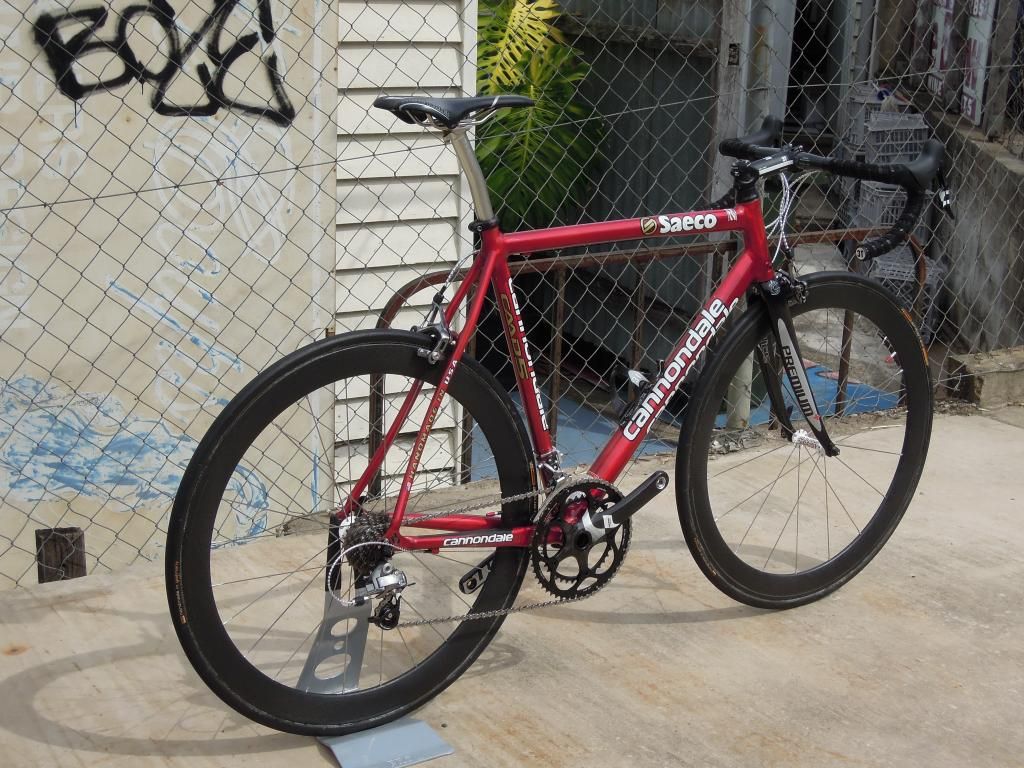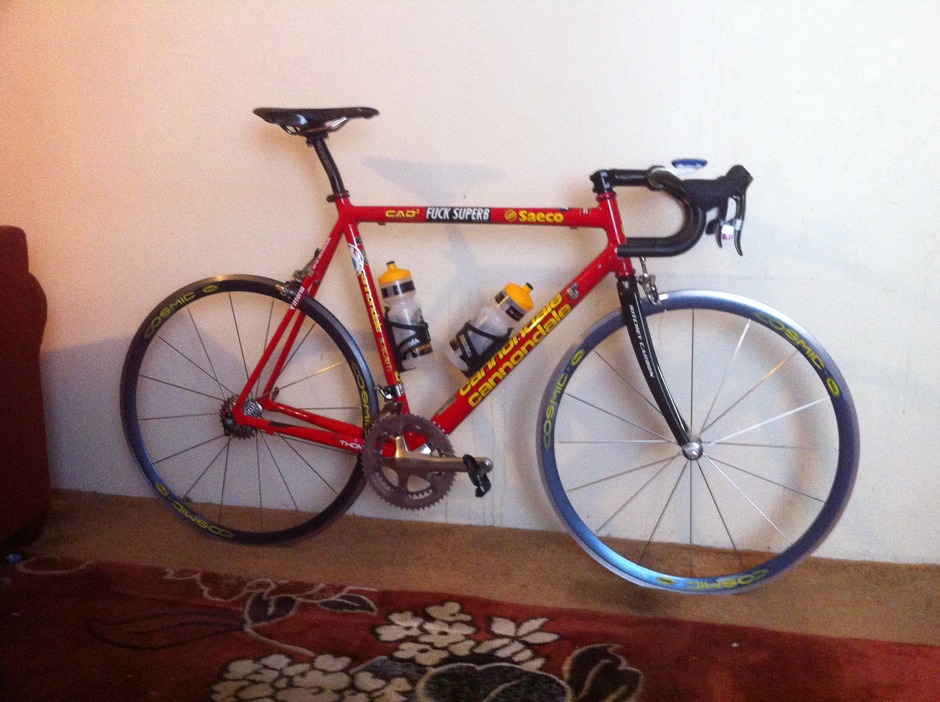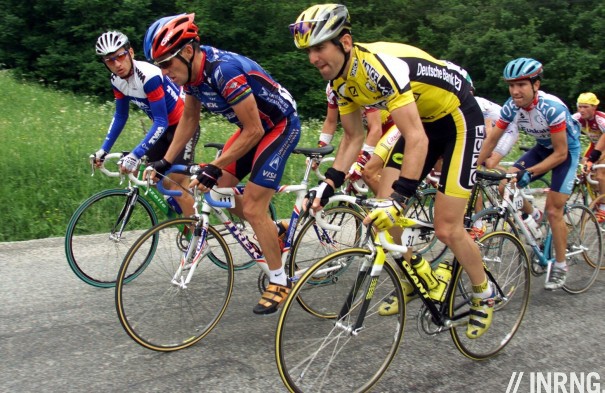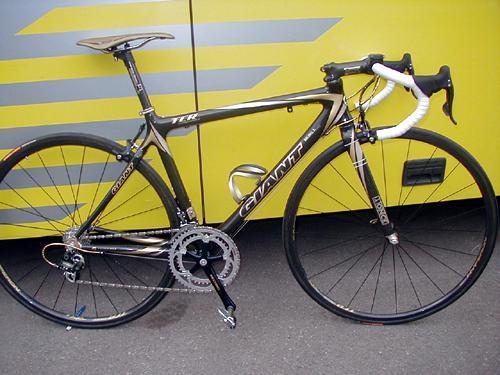-
• #52
All bikes in the last 25 years come from an era of systematic doping.

-
• #53
Thread re-name to "Druggy Bikes" pls
-
• #54
I think alloy/ carbon or mixture of both, square taper chainset, 1 1/8th steerer are a must for this era.
I think these are the absolute sex but at the same time pretty ugly..






What sort of era did 1 1/8th steerer come in and when did they start making stupidly compact frames with horrible geo come in? Inbetween those eras <3
-
• #56
The Giant Compact Road Design kickstart the whole compact geometry lark, design by Mike Burrows.

-
• #58
That was the TCR right? Not really clued up about all this stuff as when these bikes were being produced I was still spilling beans down my t-shirt at school (I really must get the hand of eating).





-
• #59
When did a-head stems come in? Around '97? Was it like a sea change from one year to the next?
-
• #60
Yup, the TCR in a sea of horizontal top tube bicycles, they're the only one that stand out noticably.
I quite like how the carbon look in the 90's, it look like they took a normal skinny steel bike and just lay it up with carbon.
-
• #61
So pleased to see all the tcr love. You need to google for a Dave Lloyd Concept 90 for some v early compact frame design.
-
• #62
Dave Lloyd! I couldn't remember who did something closer to a semi-compact before Giant but that's one good example, @mdcc_tester pointed it out to me a while ago.
-
• #63
That cable routing is exactly what gives me all the VAM on my Enigma.

-
• #64
This would have been the OCLV era for Trek I think?
-
• #65
What was the thinking behind the Dave Lloyd frame, looked like compact geo but inspired by a different logic or something,
-
• #66
Sorry for the spam, but I still have a 63cm 2002 CAAD4 for sale, If any tall folk are interested.
-
• #67
How light were some of those bikes? They extremely heavy. Guessing there was still a limit but it was heavier than 6.68kg?
-
• #68
Also why is cycling so far behind in some respects?
In the 80s in F1 racing they were using turbos, ECUs, super aero body shells and a lot of carbon. Cycling was still using steel and down-tube shifters. The only explanation I can think of is the bike manufacturers wouldn't be able to throw that much money into R&D as a F1 team but surely there's enough money from winning a TDF to make the bikes more aero and lighter even back then. Has the UCI always been a thorn in the side of cycling?
And why are most of the rides in the late 90s/early 00's using alloy seatposts, bottle cages etc when some early 90s mtbs are?
So many questions, so little time....
-
• #69
Compare a cycling team's budget to an F1 team.
Old TCRs are megawin.
-
• #70
My favourite
-
• #71
Nice scheme!
-
• #72
How much £?
-
• #73
There's a black lightening version on eBay asking for kind-of-OK money.
I think the CAAD7s and the Six13s are a bit too modern for this thread, personally. Not enough Spok / Fluro and the paint is way too tasteful.
1 Attachment
-
• #74
how much would this be worth paying for as a buyer?
look kg274 acording to the seller.
-
• #75
Also why is cycling so far behind in some respects?
Le Tour de France was completed at a faster average speed on these bikes. *
The 2003 Trek 5900 was supposedly Armstrong's favorite frame, weighing in at just 980g. Further weight savings were provided by a prototype carbon fiber steerer tube (which never made it into production), then-prototype 10-speed Shimano Dura-Ace group and Bontrager Race XXX Lite wheels. Chris King also began its three-year sponsorship run with its ubiquitious NoThreadSet threadless headset.
In 2003, the UCI hadn't yet established its minimum weight requirement so teams and riders were still free to shave grams to their heart's content; Armstrong's bike was reported to be just 6.6kg (14.5lb).
http://www.bikeradar.com/road/gear/article/tour-de-france-winning-bikes-34375/
 young_gun
young_gun OllieTheWizard
OllieTheWizard JamesNQ
JamesNQ tbc
tbc edscoble
edscoble
 fizzy.bleach
fizzy.bleach 6pt
6pt fussballclub
fussballclub Dammit
Dammit Moserism
Moserism BareNecessities
BareNecessities umop3pisdn
umop3pisdn LanterneNoire
LanterneNoire n/a
n/a Howard
Howard
Most especially Alberto.
#spitonfloor